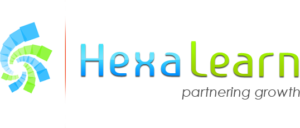The Need For An Evolved Learning Taxonomy
Designing learning involves both arts and science. A critical part of learning design is to categorize and organize skills and learning outcomes. In formal terms, we call this learning taxonomy. Learning taxonomy is a methodology to categorize different levels or types of learning. For example, remembering facts or information is one level of learning, while being able to understand or apply learning in an unknown situation is another level of learning.
Bloom’s Taxonomy
Learning experts have tried to formulate a comprehensive categorization of learning. The most famous and widely used taxonomy was given by Benjamin Bloom. He developed the taxonomy during 1950–1960. He proposed six levels of learning in his taxonomy: remembering, understanding, applying, analyzing, synthesizing, and evaluating. Bloom’s taxonomy is an excellent taxonomy to start with. In fact, there are quite a few other taxonomies developed based on it. Bloom’s taxonomy has been applied by educationists worldwide and is also the most followed taxonomy in the corporate world.
The Shortcomings Of Bloom’s Taxonomy
- Bloom’s taxonomy does not include creative domains, such as the ability to write an original piece or painting.
- Bloom’s taxonomy focuses on hierarchical levels of learning. For example, understanding is always at a higher level than remembering, synthesizing is always higher than analyzing. However, in the real world, the learning space is not so linear or hierarchical. People often move between levels more fluidly.
- Bloom’s taxonomy primarily focuses on cognitive skills. However, cognitive skills are only a part of human skills. Especially in the corporate world, behavioral skills matter a lot, sometimes more than cognitive skills.
- Bloom’s taxonomy is much less focused on psychomotor skills. Students and many other job fields require a lot of psychomotor skills.
Designing an effective learning strategy and curriculum is a key parameter for the success of any organization. Thus, learning taxonomy becomes a critical player in learning design. Let’s analyze it from a corporate perspective.
Corporate learning goals are substantially different from academic learning goals. Corporates are driven by specific domain skills and supplemented by management skills. The shortcomings of Bloom’s taxonomy become very prominent in the corporate world.
How The Shortcomings Of Bloom’s Taxonomy Affect Corporate Learning
- Non-cognitive domains
Corporates that work in the creative domain, like agencies in media, art, writing, etc., cannot base their learning design on Bloom’s taxonomy. Even corporates that do not provide creative services need a lot of creative work for their functioning. - No strict hierarchy
In the corporate world, the levels of Bloom’s taxonomy often get interchanged based on job role and thus do not make for very effective demarcation. - Behavioral and interpersonal skills
Behavioral and interpersonal take more prominence in the corporate world than their domain skills. Bloom’s taxonomy, which predominantly focuses on cognitive skills, becomes mostly irrelevant. Management training is a critical part of any organization’s success. Yes, managers and leaders do need domain skills. However, that’s only a small fraction of their key skills. The soft skills and management skills matter the most, and that’s where Bloom’s taxonomy falls short. - Psychomotor skills
Many corporates need specific psychomotor skills in their employees, which is again a missing link in Bloom’s taxonomy.
Considering all these, it is doubtless that there is a pressing need for moving on from Bloom’s taxonomy. While Bloom’s taxonomy provides an excellent foundation, thought leaders in corporate L&D need to work together to bring out a more advanced taxonomy that caters to complex business requirements.
Here Are A Few Important Considerations That A Modified Learning Taxonomy Should Have
It should incorporate all three domains—behavioral, cognitive, and psychomotor—of human learning. The levels should be versatile enough to incorporate variations needed keeping in mind the business requirements. The levels of learning should be mapped to skills required to carry out job roles. The taxonomy should focus on a total human development point of view.
Defining a taxonomy is hard and needs meticulous research and brainstorming. Taxonomy has deep-rooted implications on the development of humans and even more impact on the sustainability of businesses. Having said that, taxonomy is just a foundation, and its application in the true spirit is what matters in the end.










